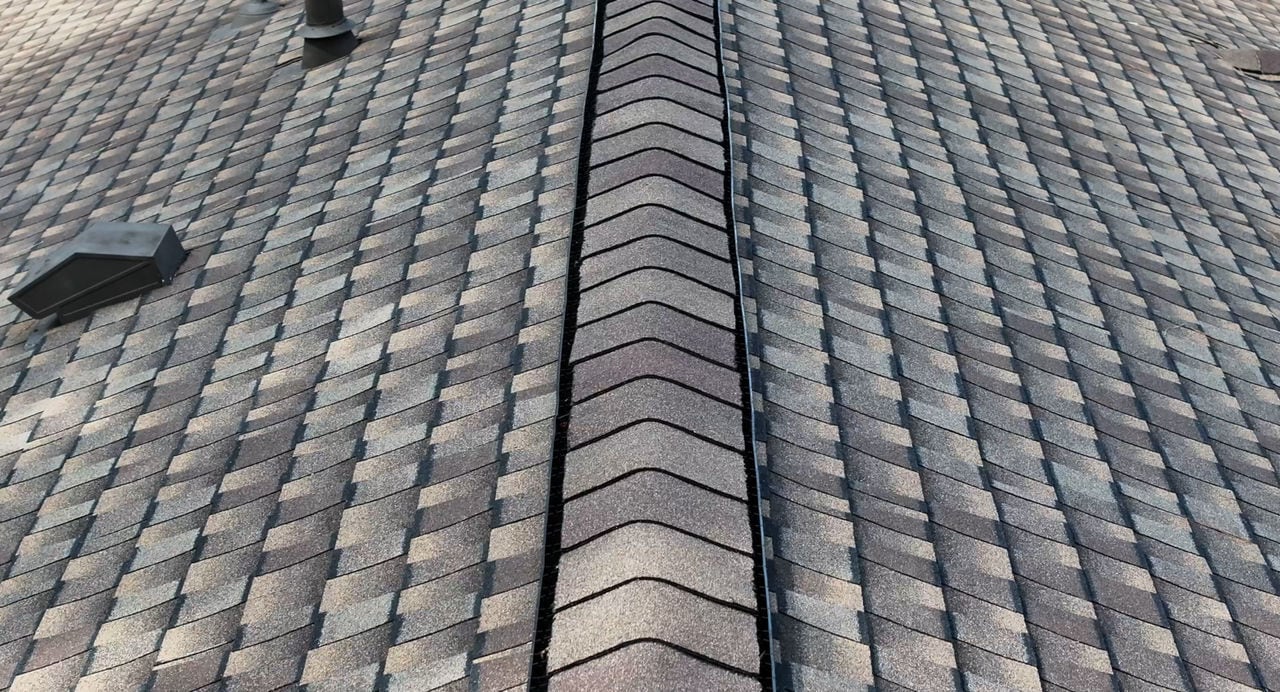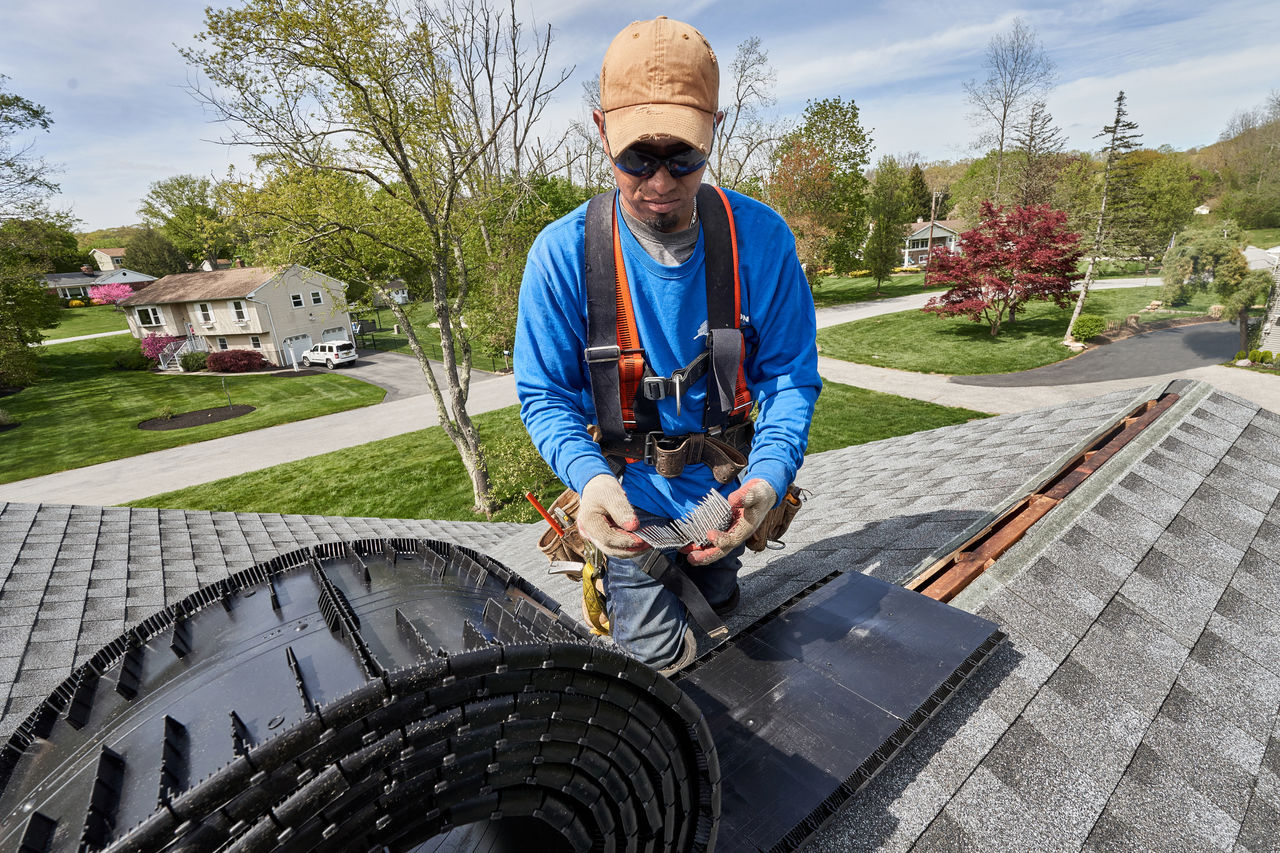Similar to how beads of water form on a cool glass of water on a hot summer day, roof condensation occurs when warm, moist air comes into contact with the cooler roof deck. This happens most often during the winter months and cold spells when the outside temperature cools the roof's surface. Left unchecked, roof condensation can lead to mold and mildew growth and potential structural damage from rust and rot.
As a homeowner, understanding roof condensation—including its signs, causes, prevention methods, and solutions—can help you maintain a safe, healthy, and comfortable home environment for you and your family. Here's what you should know.
Understanding Roof Condensation: The Science Behind Moisture
Condensation occurs when warm air, which can hold more moisture (humidity), meets a cool surface. As the air cools, it condenses the water vapor into liquid droplets, known as condensation.
So, how does this process affect your roof system? When warm air from inside your home's living space rises into the attic, it meets the underside of the cooler roof deck, causing condensation to form and settle on the attic insulation or roof deck itself. While a little condensation on the roof system during a cold spell is normal, excessive condensation over time can be a concern, leading to mold or mildew growth, rust, wood rot, and potential water damage to the inside of your home.
The Telltale Signs of Roof System Condensation
The signs of roof system condensation can look very similar to the signs of a roof leak, including:
- Water stains on ceilings
- Dripping water from lights, vents, fans, or skylights
- Moist areas on walls
- Wet attic insulation
- Mold growth and/or a musty smell
- Peeling paint
- Doors not closing properly (due to swelling or warping)
Roof Leaks Versus Condensation
Because of the significant overlap between the signs of roof system condensation and leaks, determining the cause of the moisture can be a bit tricky. In general, condensation usually appears during a cold spell, while moisture from a leak often occurs during or after a downpour.
The best way to identify whether you're dealing with a leak or condensation is to thoroughly inspect your attic space. If moisture is present throughout your attic—not just in a specific area—it's more likely to be condensation. Condensation may also cause your attic windows to fog up or feel wet to the touch. Ice dams along the eave edge of the roof can indicate condensation issues as well.
Whether you have a leak or condensation, the earlier you notice it, the less damage it can do. Inspect your attic and roof at least twice a year and after significant storms or weather events to catch any problems before they escalate.
Causes of Roof System Condensation
One of the most common causes of condensation on the roof is inadequate attic ventilation. Without proper ventilation, heat and moisture from the living space below warms the attic space more quickly. Proper ventilation allows moist, hot air to escape, helping keep the attic space cool and dry. Along with poor ventilation, insufficient attic insulation can allow more warm air from the living space below to enter the attic and collect under the roof deck, enabling the temperature contrast that leads to condensation.
Another potential cause is a faulty vapor barrier. A vapor barrier helps prevent moisture from passing through the building's interior to its exterior. If this barrier fails and allows moisture to reach the colder surface of the roof deck, condensation can occur.

The Impact of Unchecked Condensation
While condensation may seem like a relatively minor concern, it can cause significant issues over time. Left unchecked, roof condensation can:
Lead to wood rot and rust, causing potential structural damage.
Cause mold and mildew growth, which can pose health concerns, especially for people with allergies, asthma, or compromised immune systems.
Increase energy costs due to reduced heating and cooling efficiency.
Roof System Condensation Solutions and Preventive Measures
A professional roofer can assess your ventilation system to ensure it's working properly and help mitigate any damage that's already occurred. Addressing condensation typically requires drying out the space—usually by opening any windows or using a dehumidifier—removing wet insulation, treating mold or mildew, and replacing the insulation and vapor barrier.
You can also take proactive measures against condensation by ensuring your attic's ventilation, insulation, and vapor barrier are present and in good working order.
Improve Ventilation
Proper attic ventilation is the best way to prevent condensation. After determining the appropriate amount of ventilation for your attic, a contractor can install intake and exhaust vents in the roof's eaves and at or near its peak to allow proper air flow, keeping the attic cool and reducing the risk of condensation and ice dam formation.
Check Insulation
Insulation helps keep warm air from reaching the roof deck. Make sure you have enough attic insulation and that it's dry and in good shape.
Install a Vapor Barrier
A missing, torn, or improperly installed vapor barrier can lead to condensation issues. Your contractor can install, replace, or adjust your vapor barrier to ensure complete coverage and effectively prevent moisture condensation.
Protecting Your Home
Moisture in your attic space isn't something to ignore. Left unchecked, condensation can cause structural damage and pose health risks. Regular roof and attic inspections can help you detect potential roof condensation before it becomes a bigger problem.
Proper attic ventilation, insulation, and the presence of a vapor barrier are the best ways to prevent condensation and its associated concerns. For expert help maintaining your home's safety and comfort, contact a local GAF-Certified* roofing professional.
*Contractors enrolled in GAF certification programs are not employees or agents of GAF, and GAF does not control or otherwise supervise these independent businesses. Contractors may receive benefits, such as loyalty rewards points and discounts on marketing tools from GAF for participating in the program and offering GAF enhanced warranties, which require the use of a minimum amount of GAF products. Your dealings with a Contractor, and any services they provide to you, are subject to the GAF Contractor Terms of Use.

